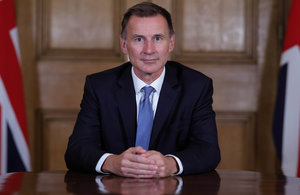Today marks the year anniversary of the recommendations made by Rt. Hon. Sarah Atherton MP in her report ‘Protecting Those Who Protect Us: Women in the Armed Forces from Recruitment to Civilian Life’. A year on, Defence have taken on these recommendations and introduced an extensive programme of work alongside the work that was already being undertaken to tackle unacceptable sexual behaviour, improve the experience for women in the Armed Forces and build trust in the Service justice System.
Most recently Defence has launched three new measures that provide clearer direction to prevent and address incidents. These are the Zero Tolerance to Sexual Exploitation and Abuse (SEA) Policy (JSP 769), the Zero Tolerance to Unacceptable Sexual Behaviour: A Victim/Survivor Focused Approach Policy (2022DIN01-073) and the Tackling Sexual Offending in Defence Strategy. These policies will ensure that Defence continues tackle unacceptable sexual behaviour and is a place where people are proud to work and have faith in their justice system.
In parallel to the recently published policies, a significant programme of work has been delivered across Defence and were set out in the Government’s Response to Sarah Atherton’s Inquiry. This includes training developments, transformation of the Service Complaints system, the stand-up of the Defence Serious Crime Unit HQ, delivery of improvements to uniform and equipment and the Servicewomen’s Health Improvement Sprint.
Recruitment
Defence has set a Level of Ambition to achieve a 30% inflow of women to the Armed Forces by 2030. It is recognised that 30% is a very challenging level of ambition, and one which has not yet been achieved by many of our NATO partners. In meeting this ambition, a Whole Force approach has been developed including tailored recruiting activities, women-focussed marketing campaigns and making greater use of Servicewomen as recruiters. Defence, however, recognises that recruitment alone is not enough and recognise that a greater focus on retention, behaviour and inclusion continues to be vital.
Women’s Health
As part of the commitment to improving the health and wellbeing for women in the Armed Forces, The Servicewomen’s Health Improvement Focus Team (SHIFT) was established to deliver the six-month Women’s Health Sprint, bringing together military and civilian skills and experiences to deliver key women’s health policies and initiatives. This includes menstruation disposal bags and a urinary support device, which are currently under procurement. Furthermore, a series of blogs on women’s health has been published by the SHIFT, with the aim of normalising the discussion of women’s health topics. These have received thousands of views and positive comments from Servicewomen, who feel like their voices are finally being heard and acted upon, and by others who welcome the opportunity to better understand and support their Servicewomen colleagues.
Diversity & Inclusion
A thorough training needs analysis was undertaken and a common standard introduced. Active Bystander Training continues to be an important part of the training offering, with the course being streamed 135,000 times, and we introduced a new Holistic Allies Training package in March 22.
April 22 saw the implementation of Climate assessments across Defence and work continues to upskill our diversity and inclusion Advisers and Practitioners to better support our people
As part of the pledge to improve the uniform and equipment offerings for women in the Armed Forces the Services have all made amendments to uniform and clothing that address women’s sizing, body shape and body changes. This includes the development of the Narrow Scalable Tactical Vest (STV). Wider revisions to uniform and clothing for each of the Services is in progress and rollout will commence in Summer 2022 and complete in 2023.
Service families
In recognition of the requirement to support a modern and diverse workforce, the UK Armed Forces Families Strategy was launched in January 22. As part of the support to service families there are currently six pilot locations running the Wraparound Childcare (WAC) scheme, with full rollout in September 22, with almost 2000 Service children benefitting from before and after school free childcare.
In June this year we published the Service Complaint Reform which introduces a range of reforms and improvements to the existing Service Complaints system for Service Personnel. This is a new system that will increase efficiency; make the system more independent through the introduction of Central Admissibility Teams; improve the support available for those who engage with the process and increase trust and confidence in the system and its decision makers.
In order to address the recommendations regarding the investigation of serious crime the Defence Serious Crime Command was established in April this year and the Defence Serious Crime Unit (DSCU) will be fully operational by December 2022.
Defence continues to build trust in the Service Complaints System and Service Justice System through a revised approach to the publication of official statistics. This is part of a commitment to being transparent and continually seeking to develop and improve policies and support to serving personnel.
Understanding behaviours
We have also launched several targeted interventions to enable Defence to improve our understanding of unacceptable behaviours. These have included the implementation of recommendations from the ‘Wigston Review into Inappropriate Behaviours’ and the subsequent Gray Review. April 22 saw the implementation of Climate assessments across Defence and work continues to upskill our diversity and inclusion Advisers and Practitioners to better support our people.
These delivered measures ensure that Defence continues to be a place where people are proud to work and have faith in their justice system. However, this is only the beginning and we are continuing to develop and improve policies to ensure our brave and dedicated serving personnel are proud to be part of the British Armed Forces.

